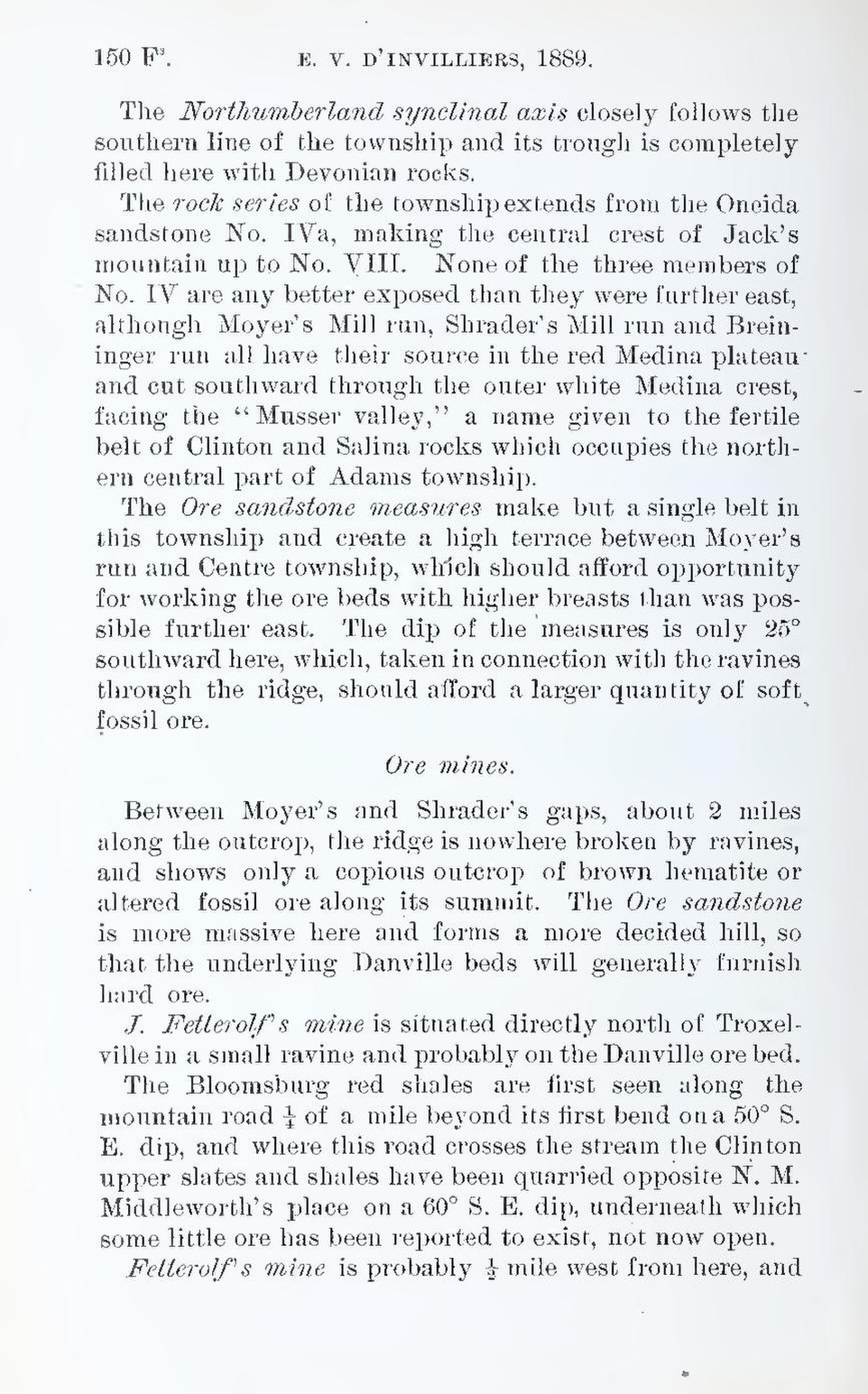The Northumberland synclinal axis closely follows the southern line of the township and its trough is completely filled here with Devonian rocks.
The rock series of the township extends from the Oneida sandstone No. IVa, making the central crest of Jack’s mountain up to No, VIII. None of the three members of No. IV are any better exposed than they were further east, although Moyer’s Mill run, Shrader’s Mill run and Breininger run all have their source in the red Medina plateau and cut southward through the outer white Medina crest, facing the “Musser valley,” a name given to the fertile belt of Clinton and Salina rocks which occupies the northern central part of Adams township.
The Ore sandstone measures make but a single belt in this township and create a high terrace between Moyer’s run and Centre township, which should afford opportunity for working the ore beds with higher breasts than was possible further east. The dip of the measures is only 25° southward here, which, taken in connection with the ravines through the ridge, should afford a larger quantity of soft fossil ore.
Ore mines.
Between Moyers and Shrader’s gaps, about 2 miles along the outcrop, the ridge is nowhere broken by ravines, and shows only a copious outcrop of brown hematite or altered fossil ore along its summit. The Ore sandstone is more massive here and forms a more decided hill, so that the underlying Danville beds will generally furnish hard ore.
J. Fetterolf’s mine is situated directly north of Troxelville in a small ravine and probably on the Danville ore bed.
The Bloomsburg red shales are first seen along the mountain road ¼ of a mile beyond its first bend on a 50° S. E. dip, and alae this road crosses the stream the Clinton upper slates and shales have been quarried opposite N. M. Middleworth’s place on a 60° S. E. dip, underneath which some little ore has been reported to exist, not now open.
Fetterolf’s mine is probably ½ mile west from here, and
